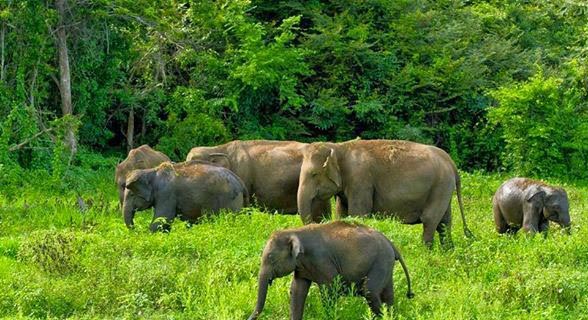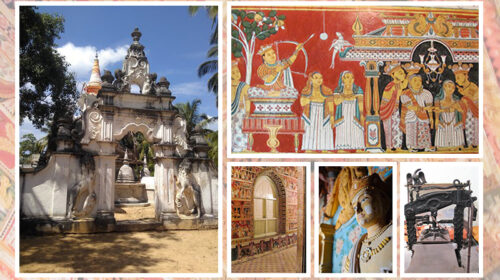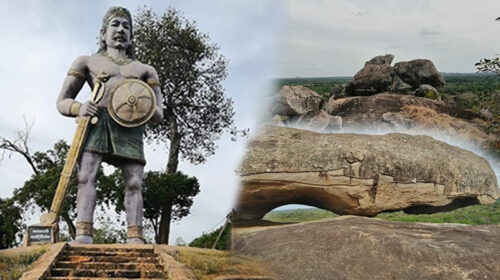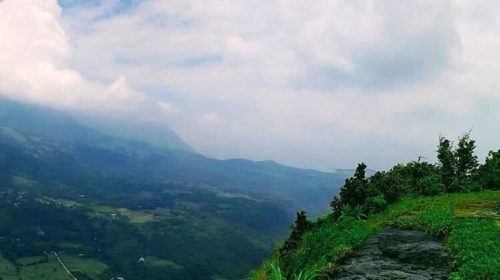Wasgamuwa National Park
Wasgamuwa National Park is situated in a space lining the Matale District and the Polonnaruwa District what begins from the eastern incline of the focal slopes. Subsequently, the recreation center has a dry zone and a wet zone environment. Subsequently, this park has an exceptional spot among the public stops in this country. Accordingly, Wasgamuwa National Park is a spot wealthy in biodiversity. The recreation center is lined by the Parakrama Samudra toward the north, the Mahaweli River toward the east, the Dunuwila Oya toward the south and the Kaluganga and Amban streams toward the west. To begin with, Wasgamuwa National Park was classified “Walasgamuwa” as it was a bear hold. Presently subsequently, Walasgamuwa was renamed Wasgamuwa and later renamed Wasgamuwa.

Wasgamuwa National Park is popular as the tallest elephant asylum in Sri Lanka. It is spread over a space of about 40,000 hectares. Old regal tanks and dykes can be seen all through the woodland and over the long run this region has turned into a creature living space. Proclaimed a secured region in 1937, the site was pronounced a National Park in 1984 with an emphasis on the wellbeing of natural life and their territories.
To arrive at Wasgamuwa from Kandy, turn directly at Hasalaka Junction on Raja Mawatha across Randenigala, Kandy and arrive at Wasgamuwa National Park. From Colombo, take Kandy Road by means of Hasalaka Junction through Raja Mawatha through Randenigala and turn directly at Wasgamuwa National Park. The best an ideal opportunity to visit Wasgamuwa National Park is from June to September. 6.00 pm Wildlife seeing is accessible until 6.00 p.m.
Yearly precipitation in Wasgamuwa National Park goes from 1650 to 2100 mm and the normal yearly temperature is between 27C – 29C. Among the dirt kinds in this woods, rosy earthy colored soil and alluvial soil are the primary ones and seven other soil types have been recognized. Wasgamuwa National Park has a place with the middle of the road zone grouping when contrasted with the greenery arrangement of Sri Lanka. This is a dry blended evergreen woodland as it contains evergreen tropical backwoods, bogs, prairies and bushes.
The most elevated place of Wasgamuwa National Park is around 535 meters and it is called Sudu Kanda. Also, a few different mountains can be seen in Wasgamuwa, the principle ones being Elune Kanda, Bombaragala, Dematagala, Veheragala, Walasgala and Thawalamgala. This white mountain is a catchment space of small feeders situated in the recreation center and the Mahaweli stream, Kalu waterway, Amban stream and different feeders of Wasgamuwa Oya, Elagolla Oya, Karapane Oya, Kanda Bidunu Ela, Veddige Ela and Yoda Ela coursing through the backwoods. Dunuwila Oya is being taken care of. There are many tanks in Wasgamuwa which are taken care of by trenches worked by the lords in antiquated occasions just as by normal streams. Kadurupitiya, Wilmitiya, Dambarawa, Dikpitiya, Kok Ebe, Yudaganapitiya, Maha Rotawela, Kuda Karamalawewa, Maha Tharamalawewa and Malagamuwa tanks are the primary ones and the untamed life needs water from these tanks.
Today, the recreation center is home to in excess of 500 elephants, which move through the transitory courses to encompassing timberlands like Minneriya, Maduru Oya, Kaudulla, Rivaster Pathana and Somawathie during the dry season. Because of this, there are around 150-200 elephants in the Wasgamuwa National Park. Well evolved creatures in Wasgamuwa National Park incorporate elephants, bears, deer, spotted deer, panthers, panthers, squirrels, squirrels, squirrels, squirrels, parrots, bison, foxes, wild pigs, pigs, pigs and pigs. Panthers, wild felines and hares are the fundamental creatures and the green monkey, parrot and brilliant hornbill are additionally endemic to Sri Lanka.
There are around 150 types of birds in Wasgamuwa, including the toadstool, the dark headed falcon, the red-blossomed coho and the haban kukula, just as the normal birds, for example, the batagoya, the peacock, the porcupine, the dark hawk and the lake bird. Transitory birds, for example, the robin and the earthy colored brown mai mara can be seen in Wasgamuwa. Snakes, spotted snakes, pythons and ahetulla snakes are normal in Wasgamuwa. Crocodiles, reptiles, squirrels, thalagoya and kabaragoya can likewise be seen here.





